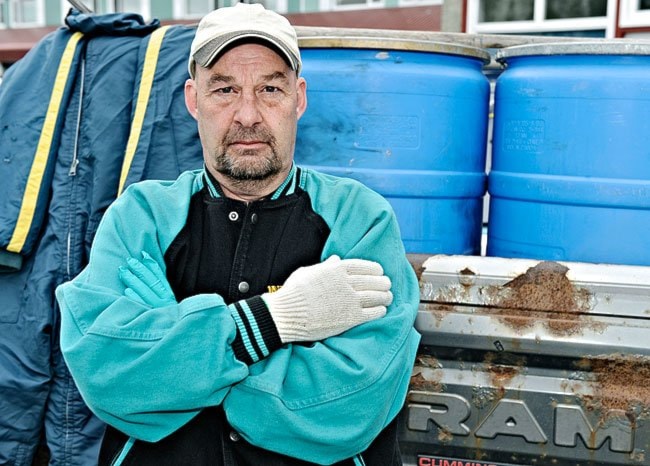The Yukon Workers’ Compensation Health and Safety Board is getting more aggressive about preventing injuries.
The reason is a huge increase in the length of claims for injuries.
In 1992, the average length of time an injured worker was off the job was 35 days. By 2004, that had risen to 100 days.
“It’s almost tripled,” board chair Craig Tuton told a news conference Friday.
“We all know and understand that workplace injuries and illnesses hurt. The workers endure physical pain and a loss of income, the employers have to deal with a loss of production time and costs, in some cases, of training replacement workers.”
Therefore, the board is launching a consultation with workers, employers and the public to figure out how all stakeholders can work together to prevent workplace injuries and illnesses.
This consultation is a part of a board process to change workplace culture in the territory.
“It is simply not acceptable that injuries are seen as a part of the cost of doing business in the territory today,” said Tuton. “Getting hurt on the job is not recognized as an acceptable cost of doing business.”
The consultations will focus on three key areas: prevention, economic incentives and indoor air quality/environmental tobacco smoke.
About 1,000 Yukon workers are injured on the job each year, and this number has not changed in several years.
Roughly half of those are injured seriously enough to miss work.
The increase in workers’ recovery time is largely due to a change in demographics — and older people don’t heal as quickly.
Secondly, more women are in the workforce than ever before and their claims tend to take longer than men’s, said Sheila Lilles, the board’s acting president.
This may be because women work more in the service industry and, there, repetitive-strain injuries are the most common ailment, which can be difficult to diagnose and treat.
“There’s been this shift in the Yukon from a goods-producing sector to a service sector, and that’s where we see many more complicated types of injuries,” said Lilles.
Furthermore, the nature of claims has changed, with more multiple chemical sensitivity and post-traumatic-stress-disorder claims — “disabilities that are very difficult to handle,” said Lilles.
“The bottom line is that the best way to deal with this is to prevent those work-related injuries and illnesses in the first place, before they happen,” said Tuton.
“We (as a board) can’t prevent those injuries and illnesses. That lies with the workers and the employers at the workplaces, and it doesn’t matter whether you work in an office, a retail store or on a construction site.”
Economic incentives are particularly important for smaller businesses with 20 or fewer employees — a category most Yukon businesses fall under.
“Some of those employers may say that they don’t have the time or the money to spend on managing safety,” said Tuton.
“However, it’s been proven, over and over again, that those companies that take the time and spend the money on managing safety are successful in more ways than one.”
Every jurisdiction in Canada has a type of incentive program in place, except for NWT/Nunavut, which will introduce one next year.
The Yukon has to decide what sort of incentive program it would like — although it is clear that, eventually, the gains for safety-focused businesses would be financial.
Some places base their incentive program on experience rating, where employers whose claim costs are below their industry average get a discount while those whose claim costs are higher pay a penalty.
Other jurisdictions focus upon best-management practices, including safe return-to-work policies, prompt reporting of claims, and audited safety programs.
Yet others combine the two approaches.
What the Yukon’s approach will be is still unknown, but something has to change because, currently, 62 per cent of Yukon workplaces don’t report an injury within the three-day limit the workers’ compensation legislation calls for.
Under the legislation, the board can issue $500 fines to these employers.
The sooner an employer reports an injury, the sooner the board can get the employee to a doctor and start the healing process, added Lilles.
The third key area the consultations focus on, indoor air quality and workplace smoking, has been in the news lately due to the recent ban on smoking in Whitehorse’s bars.
All jurisdictions in Canada are in one way or another dealing with smoking these days, said Tuton, and in two places, workers’ compensation boards have taken steps to regulate smoking.
The Yukon’s board wants to hear from Yukoners on whether setting regulations on workplace smoking is appropriate, or if other options, such as public awareness or education, are more to people’s liking.
The board’s goal is to have 80 per cent of all Yukon workplaces identify safety as their top priority by 2008 and have a safety management system in place.
“Every workplace injury and illness is preventable,” said Tuton.
The consultations begin with a public meeting at Whitehorse city council chambers on Tuesday, May 3, from 2 p.m. to 4 p.m.
People living outside the city can participate via a toll-free teleconference.
Three other meetings are scheduled in May and June, and the board has also issued a newsletter that is available at the board offices on 401 Strickland Street or online at www.wcb.yk.ca.
The deadline for feedback is June 24.
In the fall, the board intends to hold further meetings on employers’ assessment premiums.
